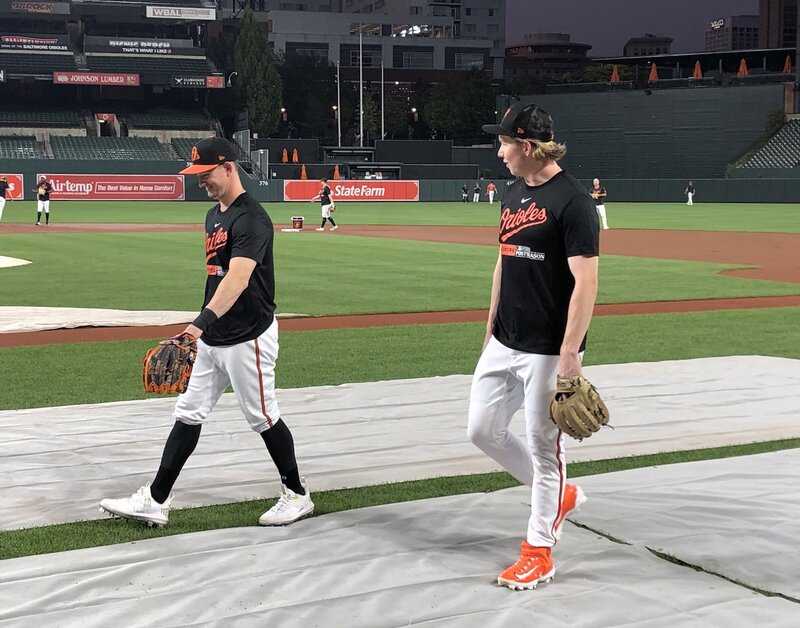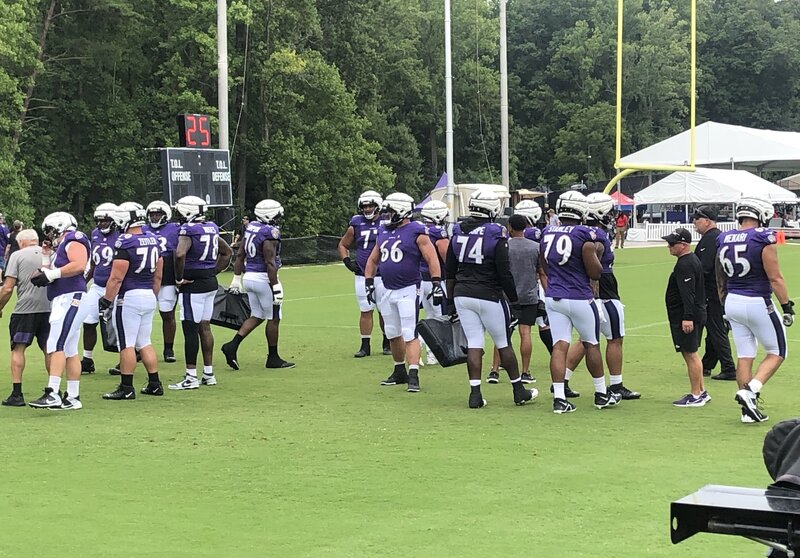Essentially, it was acknowledged that the Buccaneers would be more valuable in Baltimore, which caught the attention of many in the NFL.
January 9, 1995 – Angelos tells The Sun that he has submitted a formal bid for the Buccaneers for in excess of $200 million, pending a move to Baltimore. It was the highest bid in the history of North American sports for a pro franchise. Meanwhile, The St. Petersburg Times reported that the trustees in charge of the Buccaneers intend to sell the team to a group led by Tom Shannon, a Tampa developer, unless a substantially higher offer emerged today from someone willing to keep the team local. The bid by Shannon and his group, which includes Outback Steakhouse executives, is estimated at $145 million to $164 million. George Steinbrenner, a longtime resident of Tampa and peer of Angelos for just 18 months at that point, threw in his two cents: “Everyone is eliminating Peter Angelos,” the Yankees owner said. “I do not. I know the guy. I know his people. They are not just talkers. I’m not ruling out the Angelos offer.”
On January 11, 1995, as expected the Los Angeles Rams announced their intentions to move to St. Louis, avoiding any litigation with Cooke and the NFL on territorial rights to the Baltimore market. On January 16, 1995, the Tampa Bay Buccaneers were sold to Malcolm Glazer for $165 million with some money deferred to attempt to build a new stadium and keep the team in the area.
Angelos was crestfallen. He had offered $35 million more than the highest bidder for the Bucs and still didn’t get the team. Many insiders said he was never really in the race and was used to raise the bounty in other markets and to extract the most money possible in Florida. Culverhouse never wanted the team to leave Tampa and it never did.
Angelos learned about the politics of sports and that the biggest check doesn’t always buy the prize.
It was early 1995 and the NFL was still not in Baltimore and it didn’t appear to be coming anytime soon. Angelos would not be able to steal an existing team. The NFL didn’t want him and it apparently didn’t want to place a team in Baltimore no matter how lucrative the market appeared to be at the time. Tampa had proven to be a tepid market for nearly two decades and was still more cherished as an NFL market than Baltimore.
Baltimore was still a one-sport town and its one tenant, the Orioles, were being held hostage in the biggest labor showdown in the history of Major League Baseball, as the work stoppage had created a full civil war between the owners, the players and the fans. The 1994 World Series was cancelled. The MLB Players Association, led by Donald Fehr, wasn’t giving an inch. The owners were threatening to field “replacement” players in February 1995.
And Peter Angelos was about to pick a side. His partners in Major League Baseball, especially newly-appointed commissioner Allan “Bud Selig, would be very unhappy with his choice.
* * *
ON MARCH 31, 1995, AFTER NEARLY seven months of labor squabbling, involvement from President Bill Clinton and a media bloodbath that was sure to rock the industry for years to come, federal judge Sonia Sotomayor ordered the Major League Baseball Players Association back onto the field.
And as busy as Angelos had been during the baseball lull in the fall chasing an NFL franchise, he was equally busy positioning himself in the media in regard to the ideology of the strike and the leveraging of the players by his partners in ownership. The only problem was that his position was opposite the other 27 owners in regard to replacement players in Major League Baseball, which was a prime mover in the strike strategy of his business partners. Acting MLB commissioner Bud Selig and the other franchise owners were all set to try to bust the MLBPA by fielding “scab” players of obvious minor league ability, who would cross the picket line in a dream effort to wear a Major League Baseball uniform in big league stadiums. Angelos, forever a union supporter who’d spent a lifetime entangled in a myriad of blue-collar labor squabbles over the years, had a fundamental problem with being the employer of scab laborers. He also thought it was a dumb idea – a bad strategy – and didn’t care who knew it.
On December 27, 1994 – at the height of his chase for the Tampa Bay Buccaneers –Angelos announced to the world that there was no way the other Major League Baseball owners would force him into using replacement players. Always looking for an extra public relations angle, Angelos sold the concept that if MLB games were played at Camden Yards with scabs, it wouldn’t involve legendary Orioles shortstop Cal Ripken.
Ripken was chasing immortality with a consecutive games streak that stood at 2,009 games – or 122 games short of the record of the immortal Lou Gerhig – when the work stoppage occurred in August. And, under no circumstances would the Baltimore Orioles participate in anything that would artificially disturb a baseball streak that was just months away from legendary status.
Angelos had pointed out in the media that he was not very fond of the leadership and philosophies of self-appointed and acting MLB commissioner Bud Selig. “He is a very successful automobile dealer,” Angelos said of the Milwaukee Brewers owner. “What makes him think he has the abilities to do what he is attempting to do here is beyond my comprehension.”
On March 9, 1995 Angelos told The Los Angeles Times: “I know exactly where they stand and they know exactly where I stand. I still believe major league baseball is too dignified to resort to this. I recognized that [the concept of] replacement players will not work from the start. All it does is drive the warring sides further apart.”
Angelos flexed his political muscles as well, urging Mayor Kurt Schmoke to pass a bill that would ban the use of replacement players at Camden Yards, assuring that Ripken’s record would not be affected. Baltimore sports fans and citizens ate this up like crab cakes and beer on the 4th of July.
It would continue to add to the legend of the everyman Peter G. Angelos: civic hero, savior of the streak of Cal Ripken and champion of the people.
Well, for some people, anyway.
“He’s got 250 million people supporting him in this country,” said Orioles broadcaster Jon Miller at the time. “And 27 owners who can’t stand him.”
* * *
IF 1994 WAS THE YEAR that Peter Angelos grabbed headlines for everything that wasn’t on the field, then 1995 was certainly the year when Cal Ripken turned the lonely eyes of baseball back onto the field where he would create a Baltimore sports memory for the ages.
The fact that Ripken was Baltimore’s favorite son – a hometown kid from nearby Aberdeen, whose father was a baseball guru, teaching master and former minor league and major league manager in the Orioles organization for a generation – only added to the legend of No. 8.
Ripken’s younger brother, Bill, spent several years with the team as well, and for many in the team’s fan base, every Ripken family member was a local deity – thought to be a civic treasure for their years of loyal service to the community. The Ripken family was a provincial mirror for many local sports fans. Baltimore people saw themselves in the Ripkens. And the Ripken ethos wasn’t any different from many of the team’s blue-collar fans – hard work, playing the game the right way, living life the right way, always giving 100% and always striving for excellence. After all, that was “The Oriole Way” that Cal Ripken Sr. attempted to instill in all farmhands during the era of Earl Weaver and all of the winning that followed the franchise from the mid-1960s until the mid-1980s.
Ripken, like every other member of the Major League Baseball Players Association, was on the street awaiting some resolution on the labor agreement in early 1995. The months dragged on without movement as it became clear that anything short of breaking the union would be unacceptable to the owners, who were barely bargaining in good faith and were just six years removed from colluding against the players to suppress salaries and getting caught.
Unbeknownst to Angelos when he bought the franchise just 18 months earlier, the MLB owners – also known as the Lords in Lords of The Realm – had forged a strategy far earlier to sting the MLBPA for good in this 1994 standoff over revenue sharing and rising salaries by attempting to divide their house. “Replacement players” was the phrase used but scabs are what they’re called in a union workplace.
“To expect major league fans to accept less than major league baseball is unrealistic and, I believe, will ultimately prove to be foolhardy,” Angelos told Sports Illustrated. “These are the best players in the world. There are no replacements. That’s a hallucination.”
Angelos’ stance on not fielding replacement players served many of his purposes – the man of the people, pro-union, pro-worker, pro-fan, pro-Ripken, pro-streak angle belied the truth about this sham that his cohorts in MLB ownership were about to hatch up in an attempt to get millionaire players back onto the field earning their salaries, which per capita were the highest paying jobs in any industry in the United States of America circa 1995.
































